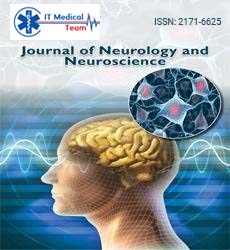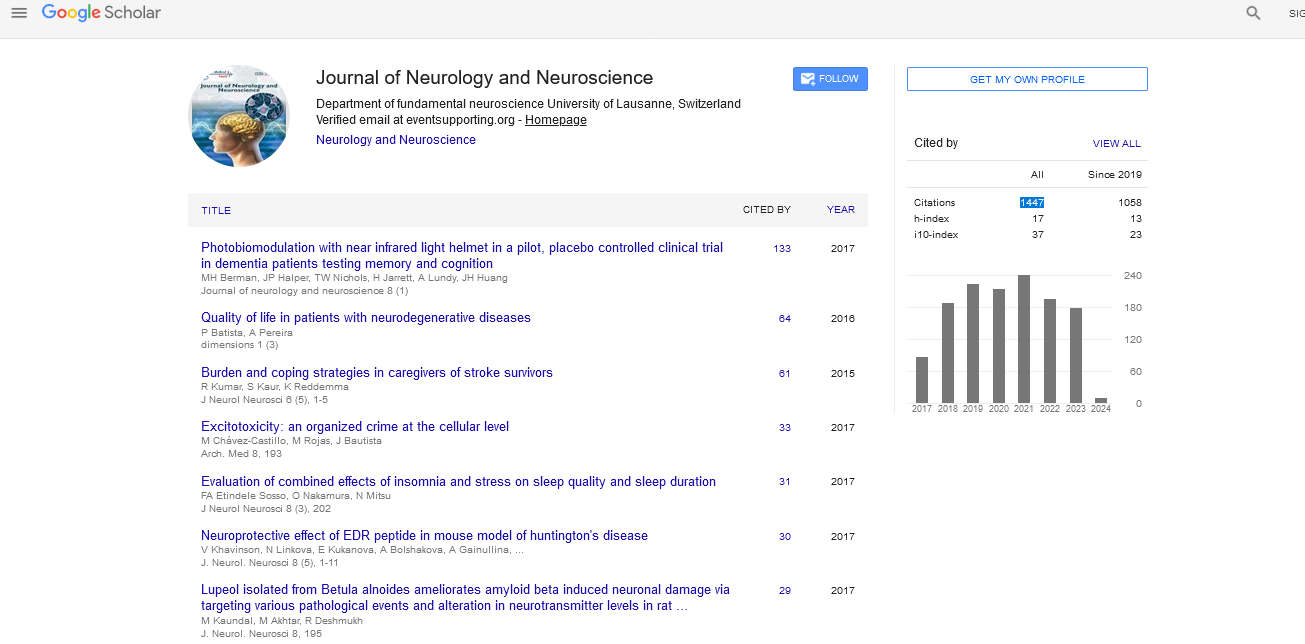Commentary - (2024) Volume 15, Issue 6
The neurocognitive mechanisms of spatial orientation and navigation in astronauts
Jacobs Florid*
Department of Psychology, University of Calgary, Calgary, Canada
*Correspondence:
Jacobs Florid, Department of Psychology, University of Calgary, Calgary,
Canada,
Email:
Received: 27-Nov-2024, Manuscript No. ipjnn-25-15496;
Editor assigned: 29-Nov-2024, Pre QC No. P- 15496;
Reviewed: 13-Dec-2024, QC No. Q-15496;
Revised: 18-Dec-2024, Manuscript No. R-15496;
Published:
25-Dec-2024
Abstract
Space exploration presents unique challenges for human physiology and cognition, especially in the domain of spatial orientation and navigation. In microgravity environments, such as the International Space Station (ISS), astronauts face a radically different spatial experience compared to Earth’s gravity-based orientation. In this article, we explore the neurocognitive mechanisms underlying spatial orientation and navigation in astronauts, highlighting how their brains adapt to the demands of space travel, the impact of microgravity on sensory processing, and the cognitive strategies used to maintain navigational abilities in unfamiliar and shifting environments. Spatial orientation refers to the ability to perceive and process information about the position of the body and objects in space. Navigation, on the other hand, is the ability to move through and understand one's position within a larger environment. These abilities are essential for survival, particularly in environments like space, where the lack of gravity and the unfamiliarity of the surroundings make traditional cues and reference points less reliable. On Earth, spatial orientation is primarily guided by a combination of sensory inputs, including visual, proprioceptive (sensory feedback from muscles and joints), and vestibular (inner ear) information. These sensory systems work together to provide feedback that helps individuals determine their body’s orientation in space. In microgravity, however, these inputs become altered, and astronauts must adapt their cognitive systems to compensate for the absence of traditional reference points
INTRODUCTION
Space exploration presents unique challenges for human physiology and cognition, especially in the domain of spatial orientation and navigation. In microgravity environments, such as the International Space Station (ISS), astronauts face a radically different spatial experience compared to Earth’s gravity-based orientation. In this article, we explore the neurocognitive mechanisms underlying spatial orientation and navigation in astronauts, highlighting how their brains adapt to the demands of space travel, the impact of microgravity on sensory processing, and the cognitive strategies used to maintain navigational abilities in unfamiliar and shifting environments. Spatial orientation refers to the ability to perceive and process information about the position of the body and objects in space. Navigation, on the other hand, is the ability to move through and understand one's position within a larger environment. These abilities are essential for survival, particularly in environments like space, where the lack of gravity and the unfamiliarity of the surroundings make traditional cues and reference points less reliable. On Earth, spatial orientation is primarily guided by a combination of sensory inputs, including visual, proprioceptive (sensory feedback from muscles and joints), and vestibular (inner ear) information. These sensory systems work together to provide feedback that helps individuals determine their body’s orientation in space. In microgravity, however, these inputs become altered, and astronauts must adapt their cognitive systems to compensate for the absence of traditional reference points [1]. One of the most significant neurocognitive adaptations astronauts make when they enter space involves their vestibular system, which is responsible for detecting motion and balance. In microgravity, astronauts lose the gravitational force that helps orient the fluid in the semicircular canals of the inner ear, which are crucial for detecting head movements in relation to gravity. As a result, many astronauts experience a phenomenon known as "space motion sickness" when they first arrive in space. This condition occurs due to the conflict between the body’s visual, proprioceptive, and vestibular signals as the brain tries to recalibrate to a new environment where traditional gravitational cues are absent. Over time, astronauts adapt to the lack of gravity through neuroplastic changes in the brain, particularly in regions that process vestibular information, such as the parietal cortex and the cerebellum. These areas play a role in processing spatial awareness, balance, and body position relative to the surrounding environment. Research suggests that astronauts’ brains adapt by enhancing the sensitivity of the vestibular system to motion cues in microgravity. However, even after adaptation, astronauts may still experience some challenges with spatial orientation, particularly when performing tasks that require precise movements or navigation [2].
DESCRIPTION
Visual inputs are another key source of spatial information. On Earth, the eyes provide critical data about the surrounding environment that helps individuals orient themselves. In space, astronauts often face a disorienting experience as the lack of gravity leads to a fluidic change in the visual cues they rely on for orientation. Without the presence of a “down” direction or stable reference points like buildings or mountains, astronauts need to rely on other forms of cognitive processing to maintain spatial awareness. One key adaptation to these challenges is the development of a more abstract cognitive map. Cognitive maps are mental representations of the environment that allow individuals to navigate and understand spatial relationships. For astronauts, the brain creates these mental maps using available sensory inputs, such as visual landmarks inside the spacecraft or space station, as well as auditory and tactile cues. Astronauts are also trained to use instruments, such as navigation systems and onboard computers, to supplement their cognitive maps. As astronauts spend more time in space, their ability to rely on these mental maps improves, allowing them to better orient themselves in the three-dimensional, gravity-free environment. Interestingly, studies on astronauts have shown that their brains often rely more heavily on visual cues for spatial orientation, especially when in orbit. This increased reliance on vision is likely a result of the diminished role of gravity, and the brain’s adaptation to the new sensory environment. Astronauts are able to use their understanding of the spacecraft or space station’s layout to form a reliable mental map of their surroundings, helping them navigate through the environment despite the absence of traditional gravitational cues [3]. Proprioception, or the sense of the body’s position in space, also plays a crucial role in spatial orientation. On Earth, proprioceptive feedback comes from the body’s joints, muscles, and tendons, providing a sense of where the limbs are in relation to the body and the surrounding environment. In microgravity, however, proprioceptive cues are altered because the body is not constantly adjusting to gravity’s pull. Despite this, astronauts retain the ability to perceive their body’s movements and position. Research indicates that this is due to the brain’s ability to recalibrate its proprioceptive systems in space, relying more on feedback from the eyes and other senses to provide a sense of body orientation. For example, astronauts often report using visual references, such as the location of objects within the spacecraft, to determine their position and movement. Additionally, astronauts in space may experience changes in their sense of “up” and “down,” which can initially lead to disorientation, particularly when moving between different areas of the spacecraft. Training in space helps astronauts to refine their proprioceptive sense, allowing them to more accurately navigate the environment. Tasks that involve movement, such as performing maintenance on the space station or conducting experiments, require careful coordination of motor skills, and astronauts adapt by recalibrating their motor system to function effectively in microgravity [4]. Neuroplasticity, the brain’s ability to reorganize and adapt to new experiences, plays a crucial role in how astronauts cope with the cognitive challenges of space travel. As astronauts spend time in microgravity, their brains undergo subtle changes that allow them to better process and integrate sensory information. Neuroplastic changes occur in several key brain regions involved in spatial processing, including the hippocampus, the parietal cortex, and the cerebellum. The hippocampus, in particular, plays a central role in forming cognitive maps and memory. It has been suggested that in microgravity, astronauts may experience structural and functional changes in the hippocampus to enhance spatial navigation. The brain’s ability to form and update cognitive maps, in turn, helps astronauts maintain spatial awareness in a constantly shifting environment. Additionally, astronauts' brains show evidence of increased activity in regions involved in multisensory integration. This suggests that the brain becomes more efficient at combining and processing various sensory inputs, such as visual, vestibular, and proprioceptive information, to create a coherent understanding of spatial orientation. Such neuroplastic changes are vital for astronauts who need to navigate unfamiliar and dynamic environments, such as during spacewalks or when performing tasks outside the spacecraft. [5].
CONCLUSION
Space exploration represents a unique and complex environment in which the brain must adapt to new spatial and navigational challenges. In the absence of gravity, astronauts’ neurocognitive systems undergo significant adaptations, particularly in how they process sensory information related to spatial orientation. The vestibular system, visual inputs, proprioception, and cognitive mapping all play important roles in helping astronauts navigate their environment and maintain their sense of orientation. Through neuroplasticity, training, and the development of cognitive strategies, astronauts are able to overcome the challenges of spatial disorientation and perform critical tasks in the microgravity environment of space. As human space exploration continues to evolve, understanding the neurocognitive mechanisms behind spatial orientation and navigation in astronauts is crucial for optimizing mission success. These insights are not only important for space missions but also have potential applications in fields such as neuroscience, rehabilitation, and robotics, where spatial cognition plays a central role in human performance.
REFERENCES
<ol>
<li><a name="1" id="1"></a><strong>Burles F, Umiltá A, McFarlane LH, et al.</strong> <a href="https://www.researchgate.net/publication/325018712_Ventral-Dorsal_Functional_Contribution_of_the_Posterior_Cingulate_Cortex_in_Human_Spatial_Orientation_A_Meta-Analysis" target="_blank">Ventral—dorsal functional contribution of the posterior cingulate cortex in human spatial orientation: A meta-analysis</a>. <em>Front Hum neurosci</em>. 2018; 12:190.</li>
<p align="right"><a href="https://scholar.google.com/scholar_lookup?title=Ventral%E2%80%94Dorsal+Functional+Contribution+of+the+Posterior+Cingulate+Cortex+in+Human+Spatial+Orientation:+A+Meta-Analysis&author=Burles,+F.&author=Umilt%C3%A1,+A.&author=McFarlane,+L.H.&author=Potocki,+K.&author=Iaria,+G.&publication_year=2018&journal=Front.+Hum.+Neurosci.&volume=12&pages=190&doi=10.3389/fnhum.2018.00190&pmid=29867414" target="_blank"><u>Google Scholar</u></a>, <a href="https://doi.org/10.3389/fnhum.2018.00190" target="_blank"><u>Crossref</u></a>, <a href="https://www.ncbi.nlm.nih.gov/pubmed/29867414" target="_blank"><u>Indexed at</u></a></p>
<li><a name="2" id="2"></a><strong>Cona G, Scarpazza C.</strong> <a href="https://onlinelibrary.wiley.com/doi/abs/10.1002/hbm.24496" target="_blank">Where is the “where” in the brain? a meta‐analysis of neuroimaging studies on spatial cognition</a>. <em>Hum Brain Mapp</em>. 2019; 40(6):1867-1886.</li>
<p align="right"><a href="https://scholar.google.com/scholar_lookup?title=Where+Is+the+%E2%80%9CWhere%E2%80%9D+in+the+Brain?+A+Meta-Analysis+of+Neuroimaging+Studies+on+Spatial+Cognition&author=Cona,+G.&author=Scarpazza,+C.&publication_year=2019&journal=Hum.+Brain+Mapp.&volume=40&pages=1867%E2%80%931886&doi=10.1002/hbm.24496&pmid=30600568" target="_blank"><u>Google Scholar</u></a>, <a href="https://doi.org/10.1002/hbm.24496" target="_blank"><u>Crossref</u></a>, <a href="https://www.ncbi.nlm.nih.gov/pubmed/30600568" target="_blank"><u>Indexed at</u></a></p>
</ol>





